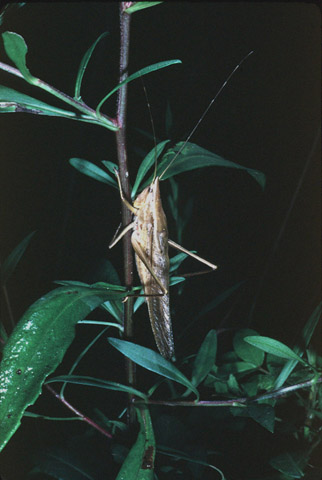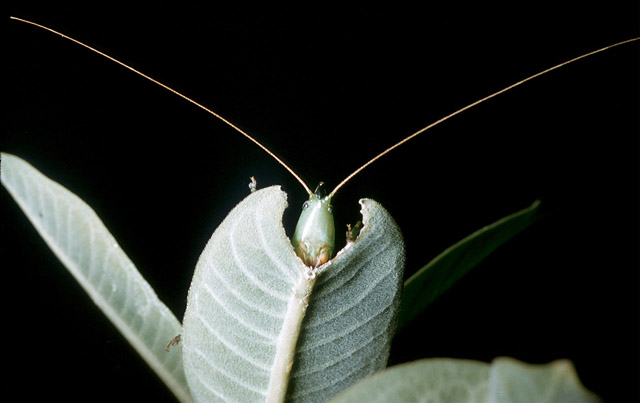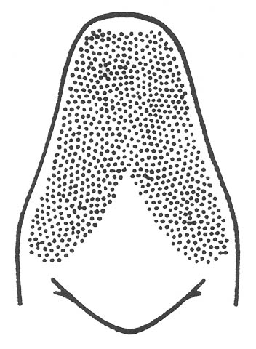|
Song:
|
A loud buzz lasting longer than 1 sec. repeated every 2 sec. Neighboring individuals partially synchronize their buzzes. All complete a buzz before a new buzz begins, but synchronizing individuals do not begin their buzzes simultaneously.
|
|
Song data:
|
Excel worksheet and chart (from spectrographicanalyses).
|
|
Identification:
|
A small conehead with a prominent cone that is largely black on its lower surface. Side of pronotum with shallow, obtuse notch at rear (as in drawing above). First 10-15 teeth at lateral end of stridulatory file conspicuously more widely spaced than remaining teeth. Length 44-56 mm.
|
|
Similar species:
|
N. lyristes has the side of the pronotum with a deeper, almost right-angle notch at rear; the first 10–15 teeth at the lateral end of the stridulatory file are not conspicuously more widely spaced than subsequent teeth. N. melanorhinus occurs on tidal flats; pronotum and file are more like N. lyisters. N. ensiger has a thin, long stridulatory vein and its cone has the black beneath more nearly confined to the edges.
|
|
Habitat:
|
Grassy, weedy, and brushy fields and roadsides. Often sings from shrubby trees.
|
|
Season:
|
July–September.
|
|
More information:
|
Subfamily Copiphorinae, genus Neoconocephalus.
|
|
References:
|
Meixner & Shaw 1979, 1986.
|
|
Nomenclature:
|
OSF (Orthoptera Species File Online).
|













